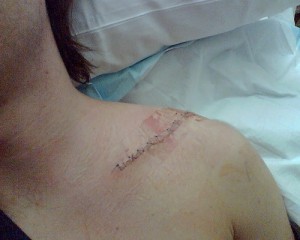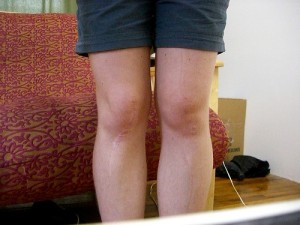The different types of arthroplasty for treating knee injury, shoulder pain and hip problems are generally prescribed once the diagnosis has been successfully carried out. Arthroplasty involves the repair or replacement of a dysfunctional joint through a surgical procedure. The result of this surgical intervention is to restore the mobility and functionality of the joint as well as to relieve the pain. The chances of a successful surgery are increased by taking proper measures pre arthroplasty.
The Types of Arthroplasty and the Conditions Behind Them
Arthroplasty surgery is often recommended for patients who suffer from osteoarthritis, rheumatoid arthritis, bone injuries, frozen or loose shoulder, congenital bone disorders as well as rare bone diseases. As far as rheumatoid arthritis is concerned, arthroplasty will not help in curing the disease or preventing its activity. But the surgical procedures and types of arthroplasty will provide relief from pain and improve joint mobility.
Hip Pain Diagnosis and Hip Arthroplasty
Hip pain can come about as a result of the onset of arthritis. It could also be due to hip injuries or fractures. Hip disorders like hip dysplasia can also be corrected with arthroplasty. Hip arthroplasty will be considered in the following cases:
- If there is acute pain in the hip and groin area either due to arthritis or injury.
- If the pain is debilitating and limits daily activities like walking, climbing and travelling.
- All other conventional treatments like anti-inflammatory drugs, pain killers or physical therapy have failed to provide relief.
- Arthroplasty could also be indicated in case there is acute stiffness in the hips.
Shoulder Pain Diagnosis and Shoulder Arthroplasty

Shoulder replacement surgery is done to replace the troublesome joints of the shoulder bone with artificial joint parts. Among the types of arthroplasty, there are two kinds of shoulder arthroplasty that are done.
The first is total shoulder replacement during which the round end of the arm bone as well as the socket is replaced with an artificial stem and a plastic shell respectively. If only one of the two parts is replaced, then it is known as partial shoulder replacement. The surgery is done in the following cases:
- If an accident has caused trauma to the shoulder bone or has broken it.
- If osteoarthritis or rheumatoid arthritis has affected the shoulder bone.
- If the tissues of the shoulder have been badly damaged.
- If there’s development of a tumor in the area.
Knee Pain Diagnosis and Knee Arthroplasty

Total knee replacement surgeries began nearly 50 years ago. However, they have not had the same success rate as hip replacement surgeries. Recent developments in the field of prosthesis have resulted in increased longevity for artificial knee joints, though. Among the types of arthroplasty, knee arthroplasty – total or partial – is recommended in the following situations:
- To relieve pain caused by acute arthritis. Knee replacement is indicated if the pain is disabling and has negatively affected the patient’s quality of life.
- The correction of a deformity may be considered as a case of surgery but is not taken to be a primary indicator.
- Knee replacement surgery often takes the age of the patient into account. This is because knee replacement has a limited longevity. As a result, it is often recommended for older patient who limit themselves to modest activities.
- Arthroplasty is also indicated in younger patients who suffer from limited joint function because of systemic arthritis.
The right procedure to be followed among the different types of arthroplasty will be determined once the diagnostic tests are carried out properly and the need for arthroplasty has been ascertained. The patient also needs to be aware of the potential arthroplasty complications before agreeing to undergo the surgery.